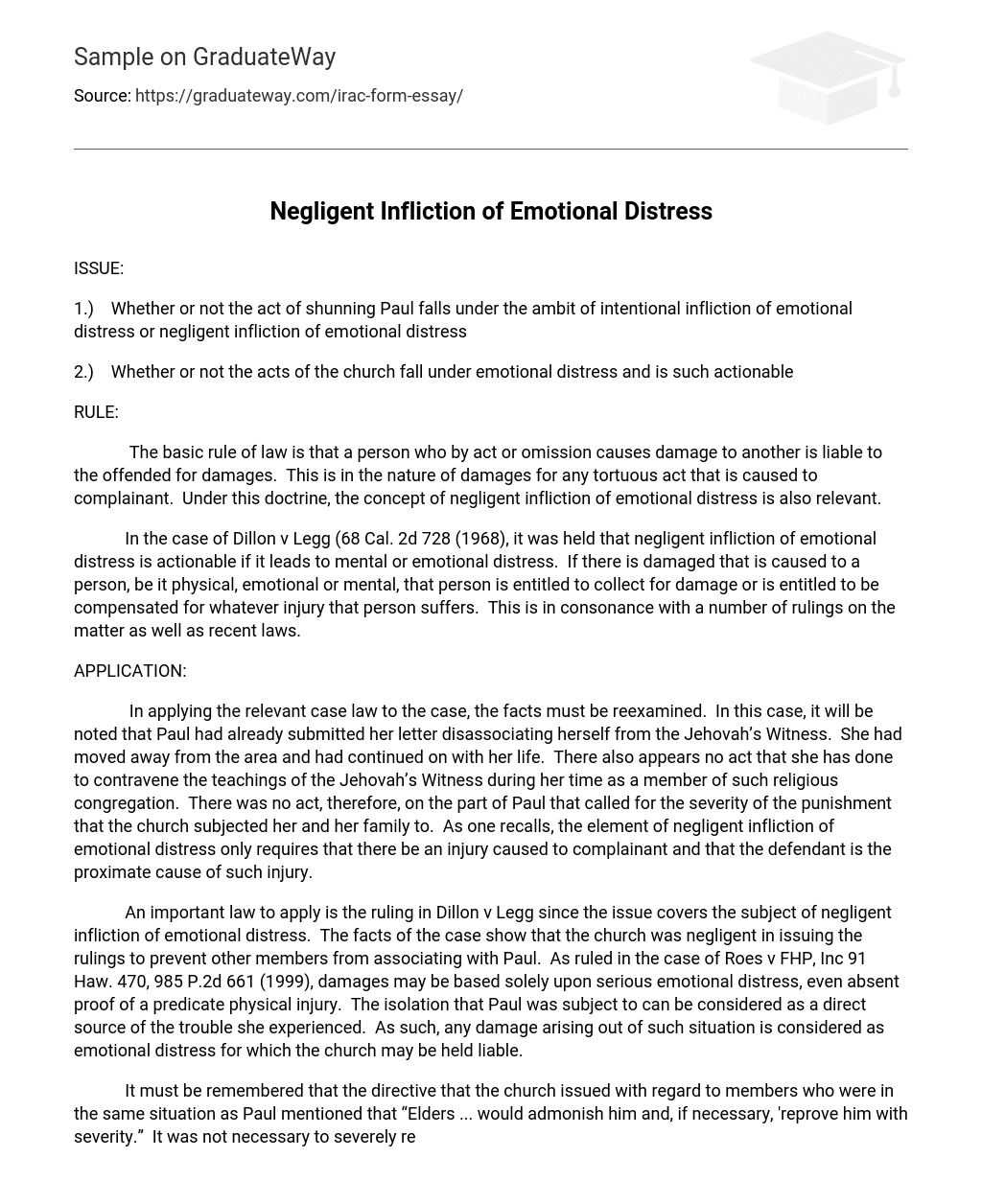ISSUE:
1.) Whether or not the act of shunning Paul falls under the ambit of intentional infliction of emotional distress or negligent infliction of emotional distress
2.) Whether or not the acts of the church fall under emotional distress and is such actionable
RULE:
The basic rule of law is that a person who by act or omission causes damage to another is liable to the offended for damages. This is in the nature of damages for any tortuous act that is caused to complainant. Under this doctrine, the concept of negligent infliction of emotional distress is also relevant.
In the case of Dillon v Legg (68 Cal. 2d 728 (1968), it was held that negligent infliction of emotional distress is actionable if it leads to mental or emotional distress. If there is damaged that is caused to a person, be it physical, emotional or mental, that person is entitled to collect for damage or is entitled to be compensated for whatever injury that person suffers. This is in consonance with a number of rulings on the matter as well as recent laws.
APPLICATION:
In applying the relevant case law to the case, the facts must be reexamined. In this case, it will be noted that Paul had already submitted her letter disassociating herself from the Jehovah’s Witness. She had moved away from the area and had continued on with her life. There also appears no act that she has done to contravene the teachings of the Jehovah’s Witness during her time as a member of such religious congregation. There was no act, therefore, on the part of Paul that called for the severity of the punishment that the church subjected her and her family to. As one recalls, the element of negligent infliction of emotional distress only requires that there be an injury caused to complainant and that the defendant is the proximate cause of such injury.
An important law to apply is the ruling in Dillon v Legg since the issue covers the subject of negligent infliction of emotional distress. The facts of the case show that the church was negligent in issuing the rulings to prevent other members from associating with Paul. As ruled in the case of Roes v FHP, Inc 91 Haw. 470, 985 P.2d 661 (1999), damages may be based solely upon serious emotional distress, even absent proof of a predicate physical injury. The isolation that Paul was subject to can be considered as a direct source of the trouble she experienced. As such, any damage arising out of such situation is considered as emotional distress for which the church may be held liable.
It must be remembered that the directive that the church issued with regard to members who were in the same situation as Paul mentioned that “Elders … would admonish him and, if necessary, ‘reprove him with severity.” It was not necessary to severely reprove Paul for her actions because she had a right to disassociate herself with the group. The “shunning” of the other member in compliance with church doctrine removes this from the ambit of intentionally inflicted emotional distress and places it within the purview of negligent infliction of emotional distress.
CONCLUSION:
Negligent infliction of emotional distress, as opposed to intentional infliction of emotional distress, has its roots in the idea that damages may be based solely upon serious emotional distress, even absent proof of a predicate physical injury. This has been awarded by the court several times in cases that show the complainant suffering from emotional or mental distress due to actions that can be directly attributed to the defendant. In the case at hand, it is clear that as long as it is reasonably foreseeable that such injury would cause some person emotional distress it can be the basis for an action of tort. It must be noted, however, that the new rules applying NIED do not require that physical injury be inflicted.





